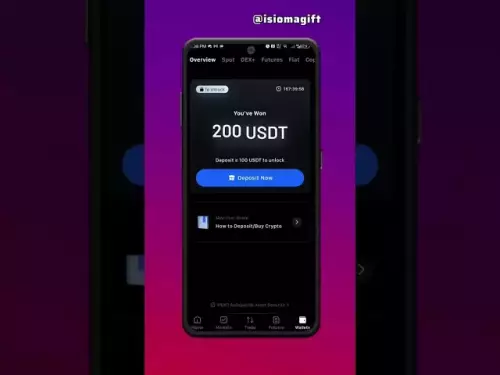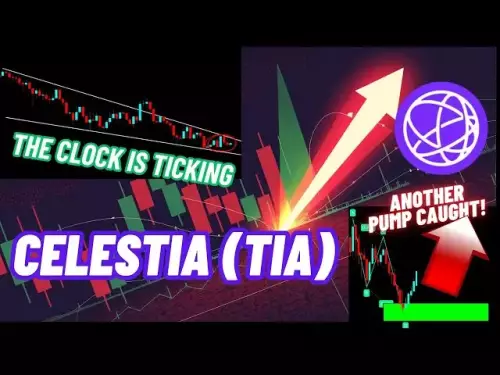-
 Bitcoin
Bitcoin $108100
-0.53% -
 Ethereum
Ethereum $4406
-0.85% -
 Tether USDt
Tether USDt $0.0000
0.00% -
 XRP
XRP $2.736
-3.29% -
 BNB
BNB $854.1
-0.62% -
 Solana
Solana $199.2
-2.23% -
 USDC
USDC $0.9998
-0.01% -
 TRON
TRON $0.3379
-1.08% -
 Dogecoin
Dogecoin $0.2113
-2.94% -
 Cardano
Cardano $0.8044
-2.83% -
 Chainlink
Chainlink $22.94
-3.31% -
 Hyperliquid
Hyperliquid $44.27
-1.09% -
 Ethena USDe
Ethena USDe $1.001
0.03% -
 Sui
Sui $3.192
-3.56% -
 Stellar
Stellar $0.3491
-3.11% -
 Bitcoin Cash
Bitcoin Cash $534.3
-2.79% -
 Avalanche
Avalanche $23.11
-3.16% -
 Cronos
Cronos $0.2785
-5.59% -
 Hedera
Hedera $0.2141
-4.96% -
 UNUS SED LEO
UNUS SED LEO $9.590
0.14% -
 Litecoin
Litecoin $108.6
-2.13% -
 Toncoin
Toncoin $3.130
-0.08% -
 Shiba Inu
Shiba Inu $0.00001204
-2.84% -
 Polkadot
Polkadot $3.711
-2.52% -
 Uniswap
Uniswap $9.469
-3.39% -
 Dai
Dai $0.9999
0.00% -
 Bitget Token
Bitget Token $4.511
-1.41% -
 Monero
Monero $263.9
0.15% -
 Aave
Aave $310.7
-3.13% -
 Ethena
Ethena $0.6331
-6.76%
How to use the Binance portfolio tracker?
The Binance portfolio tracker offers real-time, consolidated insights into crypto holdings across multiple wallets and exchanges, supporting over 1,000 assets and secure read-only API connections.
Sep 01, 2025 at 01:00 pm
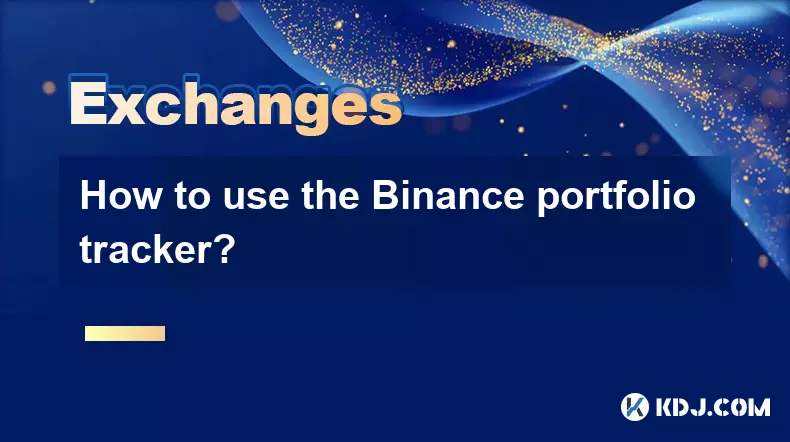
Understanding the Binance Portfolio Tracker
1. The Binance portfolio tracker is a powerful tool designed to help users monitor their cryptocurrency investments across multiple wallets and exchanges. By integrating various accounts, traders gain a consolidated view of their total holdings, performance, and asset distribution. This feature supports not only Binance accounts but also external wallets and other exchange platforms, offering a comprehensive financial snapshot.
2. Access to the portfolio tracker is available through the Binance website or mobile application. Once logged in, users can navigate to the “Portfolio” section under the “Finance” or “Wealth” tab, depending on the interface version. The dashboard displays real-time data, including total portfolio value in fiat currency, breakdown by asset, and 24-hour profit and loss.
3. The system automatically updates balances based on current market prices. Users can customize the display currency—options include USD, EUR, BTC, and others—allowing for flexibility depending on regional or investment preferences. This dynamic valuation helps traders make informed decisions without manually calculating asset worth across different blockchains.
4. Security remains a top priority. Binance uses encrypted connections and does not store private keys when linking external wallets. Instead, it retrieves balance information through read-only APIs, minimizing exposure to potential threats. Users are advised to generate API keys with restricted permissions to further enhance account safety.
5. The tracker supports major cryptocurrencies such as Bitcoin, Ethereum, Binance Coin, and hundreds of altcoins. It also includes stablecoins and tokens from various blockchain networks, ensuring broad coverage for diversified portfolios. Real-time price feeds are pulled from Binance’s own trading engine, ensuring accuracy and consistency with exchange rates.
Setting Up Your Portfolio Tracker
1. To begin using the portfolio tracker, log in to your Binance account and locate the “Portfolio” option in the main menu. Clicking this opens the setup wizard, which guides users through connecting wallets and exchanges. The interface is intuitive, featuring tooltips and step-by-step instructions for first-time users.
2. For linking external exchanges, users must generate an API key from the respective platform. This process typically involves visiting the exchange’s settings, navigating to the API section, and creating a new key with viewing permissions only. The key and secret are then entered into Binance’s portfolio setup form.
3. To add a wallet, select the blockchain network (e.g., Ethereum, Solana, Bitcoin) and input the public wallet address. Binance scans the blockchain to retrieve token balances, including NFTs if supported. This method works for both custodial and non-custodial wallets, provided the address is publicly accessible.
4. Multiple accounts can be linked simultaneously. Each added source appears as a separate entity within the portfolio dashboard, with toggle options to show or hide specific accounts. This segmentation allows users to analyze performance by platform or wallet type, aiding in strategic rebalancing.
5. After setup, the system begins syncing data. Initial synchronization may take several minutes, especially for wallets with large transaction histories. Subsequent updates occur automatically at regular intervals, ensuring the portfolio reflects the latest on-chain and off-chain movements.
Monitoring Performance and Asset Allocation
1. The performance tab displays daily, weekly, and monthly returns, calculated based on historical prices and transaction timestamps. Gains and losses are shown in both percentage and fiat value, enabling users to assess volatility and long-term trends. This real-time analytics layer is crucial for active traders managing leveraged positions or swing trades.
2. A pie chart visualizes asset distribution, highlighting dominant holdings and underperforming tokens. Users can drill down into each asset to view purchase price, current value, and unrealized profit. This breakdown supports tax reporting and helps identify overexposure to high-risk assets.
3. Transaction history is aggregated across all linked accounts, providing a unified timeline of buys, sells, transfers, and staking rewards. Filters allow sorting by date, asset type, or transaction category, simplifying audit processes. This feature is especially useful for users who frequently move funds between exchanges to capture arbitrage opportunities.
4. Custom alerts can be set for price thresholds or portfolio value changes. When a predefined condition is met—such as a 10% drop in total holdings—a notification is sent via email or push message. These alerts help mitigate losses during sudden market downturns.
5. The tracker includes a benchmarking function, allowing users to compare their portfolio’s performance against major indices like the Crypto 20 or Bitcoin dominance. This comparative analysis reveals whether returns are driven by market momentum or individual strategy effectiveness.
Frequently Asked Questions
Can I track NFTs in my Binance portfolio?Yes, Binance portfolio tracker supports NFT balance display for compatible wallets, particularly those on Ethereum and BNB Smart Chain. It shows the number of NFTs held and their floor price, though valuation may not reflect real-time auction prices.
Does linking external accounts give Binance access to my funds?No. Binance only retrieves balance information using read-only API keys. It cannot initiate withdrawals or trades on linked external exchanges unless explicitly authorized through separate means.
Why is my portfolio balance inaccurate?Inaccuracies may occur due to delayed API sync, unsupported tokens, or incorrect wallet addresses. Ensure all API keys have proper permissions and refresh the data manually if discrepancies persist.
Is the portfolio tracker available on the Binance mobile app?Yes, full functionality is available on both iOS and Android versions of the Binance app. Users can view charts, receive alerts, and manage linked accounts directly from their smartphones.
Disclaimer:info@kdj.com
The information provided is not trading advice. kdj.com does not assume any responsibility for any investments made based on the information provided in this article. Cryptocurrencies are highly volatile and it is highly recommended that you invest with caution after thorough research!
If you believe that the content used on this website infringes your copyright, please contact us immediately (info@kdj.com) and we will delete it promptly.
- Memecoins September 2025 Watchlist: What's Hot Now?
- 2025-08-31 23:25:15
- Eric Trump Predicts Bitcoin to $1 Million: Hype or Reality?
- 2025-08-31 23:25:15
- BlockDAG: Redefining Scalability and ROI Potential in 2025
- 2025-08-31 23:05:16
- Ozak AI, Altcoins, and 20x Potential: Navigating the Crypto Landscape
- 2025-09-01 00:05:12
- Bonk Price, Solana Meme Coin, and the Rise of Layer Brett: A New Era?
- 2025-08-31 21:25:12
- ETH Transactions Soar, BTC Whale Shifts Gears: Decoding August's Crypto Charts
- 2025-08-31 21:05:16
Related knowledge

How to create a sub-account on Binance?
Sep 01,2025 at 12:36am
Accessing the Binance Sub-Account Feature1. Log in to your Binance account using your registered email and password. Ensure that two-factor authentica...

How to use the Binance portfolio tracker?
Sep 01,2025 at 01:00pm
Understanding the Binance Portfolio Tracker1. The Binance portfolio tracker is a powerful tool designed to help users monitor their cryptocurrency inv...
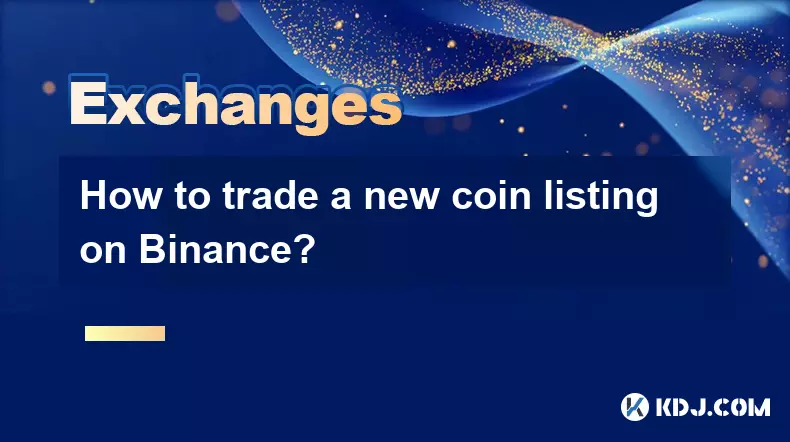
How to trade a new coin listing on Binance?
Aug 29,2025 at 11:14am
Understanding the Pre-Listing Phase1. Research the project thoroughly before any listing announcement. Whitepapers, team backgrounds, and community se...
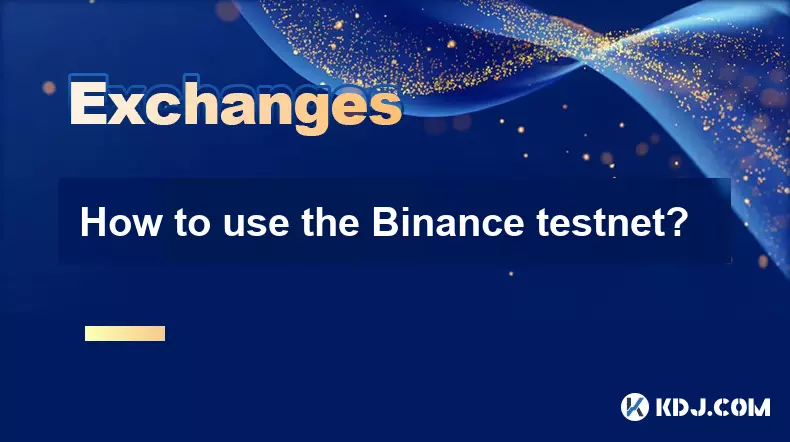
How to use the Binance testnet?
Aug 31,2025 at 02:19am
Understanding the Binance Testnet Environment1. The Binance testnet is a simulated version of the Binance Smart Chain (BSC) that allows developers and...
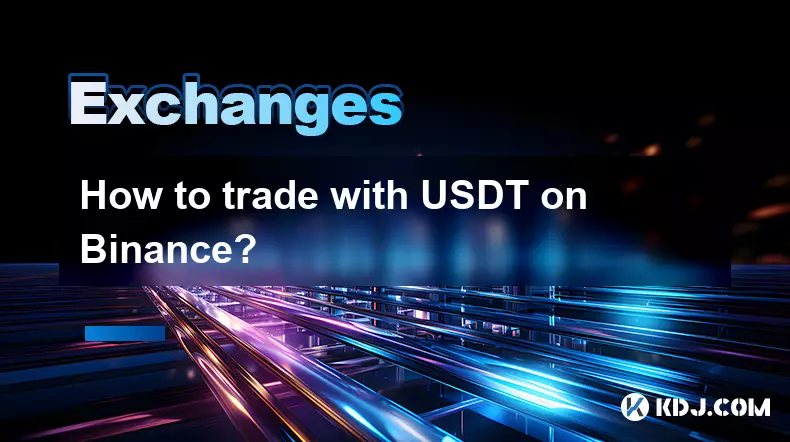
How to trade with USDT on Binance?
Aug 30,2025 at 02:19am
Getting Started with USDT Trading on Binance1. Create and verify your Binance account. Visit the official Binance website and complete the registratio...
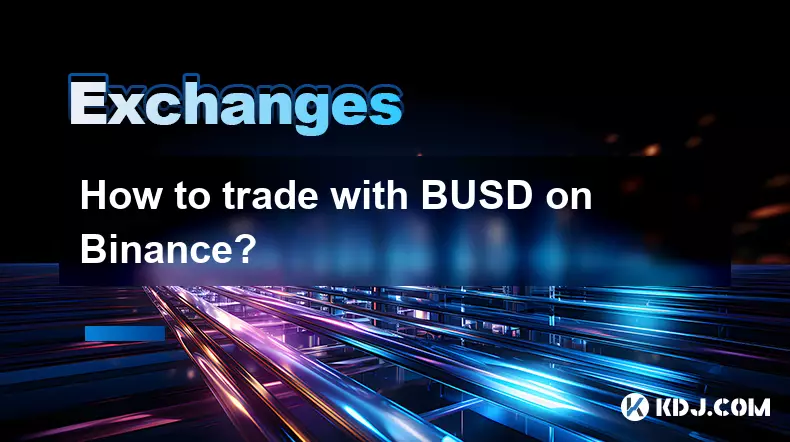
How to trade with BUSD on Binance?
Aug 30,2025 at 07:42am
Understanding BUSD and Its Role in Binance Trading1. BUSD, or Binance USD, is a stablecoin pegged to the value of the U.S. dollar, meaning 1 BUSD is a...

How to create a sub-account on Binance?
Sep 01,2025 at 12:36am
Accessing the Binance Sub-Account Feature1. Log in to your Binance account using your registered email and password. Ensure that two-factor authentica...

How to use the Binance portfolio tracker?
Sep 01,2025 at 01:00pm
Understanding the Binance Portfolio Tracker1. The Binance portfolio tracker is a powerful tool designed to help users monitor their cryptocurrency inv...

How to trade a new coin listing on Binance?
Aug 29,2025 at 11:14am
Understanding the Pre-Listing Phase1. Research the project thoroughly before any listing announcement. Whitepapers, team backgrounds, and community se...

How to use the Binance testnet?
Aug 31,2025 at 02:19am
Understanding the Binance Testnet Environment1. The Binance testnet is a simulated version of the Binance Smart Chain (BSC) that allows developers and...

How to trade with USDT on Binance?
Aug 30,2025 at 02:19am
Getting Started with USDT Trading on Binance1. Create and verify your Binance account. Visit the official Binance website and complete the registratio...

How to trade with BUSD on Binance?
Aug 30,2025 at 07:42am
Understanding BUSD and Its Role in Binance Trading1. BUSD, or Binance USD, is a stablecoin pegged to the value of the U.S. dollar, meaning 1 BUSD is a...
See all articles























